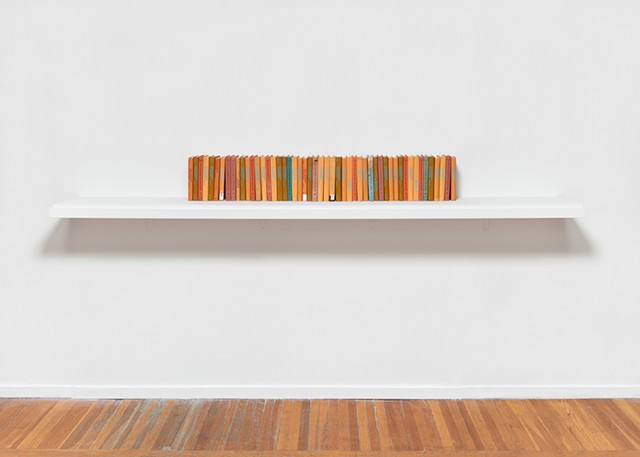This exhibition contains the largest, and only, collection of Clay and Glazes for the Potter by Daniel Rhodes. The book, first published by the Chilton Book Company in 1957, is a widely used textbook on ceramics to this day. In the 1957 First Edition there is a description of the fiberglass technique being invented and perfected by Rhodes. The 1973 Second Edition description was updated and focused on the dangers of fiberglass use. Other additives such as burlap and nylon fiber remain safe.
My career in Ceramics has had two distinct aspects. One has been teaching and writing, and the other making pottery and sculpture . . . My enthusiasm for clay led me to dig deeply into its history, its relationship to the other arts, its technology, its beauty as a craft. Without much conscious effort, I became something of an encyclopedia on the subject. As a teacher, I learned to organize the material, to put it into digestible form. My writing was an extension of my teaching . . . Writing also clarified my mind as well as that of the reader.
-Daniel Rhodes, Ceramics Monthly, September 1987
Duplicating Daniel
Solo Exhibition by Kari Marboe
Mills College Art Museum, Oakland, CA
January 22-March 15, 2020
Duplicating Daniel traced artist Kari Marboe’s attempts to recreate an original sculpture, recorded as missing from Mills College Art Museum’s permanent collection, by the influential but under-recognized ceramicist Daniel Rhodes. The only remaining evidence of this sculpture is its accession date (1975, gift of the artist) and a murky black and white photocopy.
The exhibition included Marboe’s numerous attempts to create physical ‘replicas’ of Rhodes’ sculpture and other renditions developed in the course of her research, and not based solely on the formal properties of the missing work. Research sites included the museum’s archives, Alfred University, NY archives, Greenwich House Pottery, NY archives, and descriptive information mined from interviews with artists and curators who knew Rhodes and his work.
Topics of investigation included creating ceramic “kickstand” sculptures that address the question, if the piece now exists only as a photograph, how can we help it stand up and be a sculpture again? Marboe’s work also explores the language of her process, including watercolor paintings using the sculpture’s potential color (described by ceramicist Nancy Selvin as an “uncool, but cool, brown”) to depict synonyms of the word “duplicate.” Additionally, she married her own forms with the technique of adding fiber or burlap to the sculpture based on Rhodes’ work.
The exhibition engaged the history of ceramics, the interconnectivity of the ceramics community and the Bay Area’s cultural legacy, as well as the acts of translation, and the embedded failure of trying to make, or be, an exact copy of something else. At the end of the exhibition, one of Marboe’s sculptures, Unmistakable Feel of Pottery, entered the museum’s permanent collection as a replacement for the missing Rhodes piece.
The first iteration of this work was developed in collaboration with A-B Projects, Los Angeles, 2018. Nicole Seisler, curator/director, started the space as a site for expanded ceramics, and was instrumental in encouraging this project and providing the title for the exhibition.
Many thanks to all the collaborators and lenders to the exhibition: Nathan Lynch, Stephanie Hanor, Jayna Swartzman-Brosky, Eli Thorne, Andrea and John Gill, Arthur Gonzalez, John Hosford, Susan Kowalczyk, Philip Linhares, Kaitlin McClure, Del Miller, Rosa Novak + Mutual Stores, Nancy Selvin, Linda Sormin, Michael Swaine, Luke Turner, Adam Welch, the Oakland Museum of California, and the Ceramics Community at California College of the Arts. Kari Marboe: Duplicating Daniel was supported through the generosity of the Agnes Cowles Bourne Fund for Special Exhibitions.
